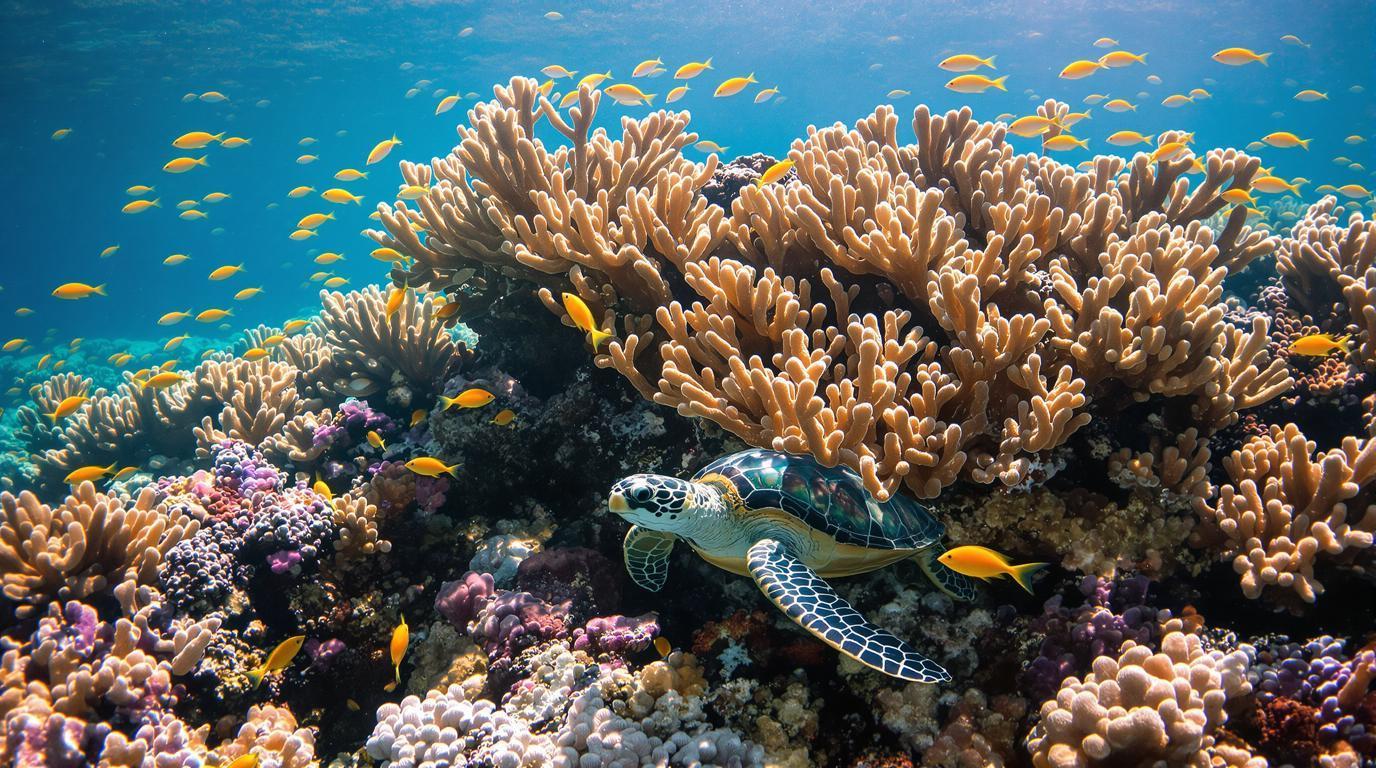The ferry from Trois-Rivières cuts through Caribbean waters for just 20 minutes before revealing something extraordinary. Les Saintes emerges like a secret whispered between waves – an archipelago so small that its main island, Terre-de-Haut, stretches barely 5 kilometers end to end. That’s smaller than Central Park, yet this tiny French Caribbean paradise holds coral reefs that put the crowded shores of Saint Martin to shame.
What locals call “Lésent” in Creole feels like stepping into a protected world where time moves differently. The daily visitor count hovers around 300-400 people, a fraction of what nearby islands endure. When evening arrives at 5 PM and day-trippers catch the last ferry back to Guadeloupe, something magical happens – the real Les Saintes awakens.
This isn’t just another Caribbean destination. It’s a living testament to what happens when a community chooses authentic preservation over mass tourism. The coral reefs here thrive because they’re protected, not trampled. The French-Caribbean culture flourishes because it’s lived, not performed.
The scale that creates intimacy
Walking the entire island in an afternoon
Terre-de-Haut’s 6 square kilometers can be explored completely on foot in a single afternoon. The highest point, Chameau peak, offers 360-degree views of the entire archipelago – something impossible on larger islands. Local fishermen still moor their traditional boats in the same spots their grandfathers used, creating a living museum of Caribbean maritime life.
Population that knows your name
With just 3,418 residents spread across two inhabited islands, Les Saintes feels more like a village than a destination. Restaurant owners remember your order from yesterday. Shopkeepers in the tiny town center wave as you pass. This isn’t manufactured friendliness – it’s the natural rhythm of a place where tourism supports, rather than overwhelms, local life.
Coral reefs that shame the famous islands
Marine sanctuary status that actually protects
The shallow reefs encircling Les Saintes showcase pristine coral formations that have largely escaped the bleaching plaguing other Caribbean destinations. The columnar basalt formations at Pain de Sucre create underwater landscapes unique in the region. Snorkeling here reveals what Saint Martin’s reefs looked like before cruise ships arrived daily.
Turtle encounters without crowds
Green sea turtles nest on the quieter beaches of Terre-de-Bas, undisturbed by jet skis and beach bars. The water temperature holds steady at 28°C year-round, creating perfect conditions for both coral growth and turtle habitat. Local guides lead small groups to the best spots, ensuring encounters remain respectful and sustainable.
French-Caribbean culture that lives authentically
Tourment d’amour and real creole cooking
The famous tourment d’amour pastries – coconut, guava, or banana-filled delights – are baked fresh daily in family-run patisseries. Unlike the sanitized versions served on cruise ships, these carry the authentic flavors of French-Caribbean fusion. Evening meals at La Fringale feature catch-of-the-day prepared by fishermen’s families, not resort chefs.
Creole traditions preserved by necessity
Traditional fishing practices continue because they work, not because they’re quaint. The Creole language flows naturally in daily conversations, supplemented by French rather than replaced by English. Local festivals celebrate genuine community connections, not tourist calendars. This authenticity exists because the island’s size makes pretense impossible.
Protection that benefits everyone
Ferry access that controls the experience
The limited ferry schedule from Trois-Rivières naturally regulates visitor numbers. This isn’t accidental – it’s a deliberate choice that preserves the island’s character. The €30-40 return fare ($30-45) represents exceptional value for what you receive: access to one of the Caribbean’s last authentic island experiences.
Evening serenity that transforms the island
After 5 PM, when the day-trip boats depart, Les Saintes reveals its true personality. Locals emerge for evening strolls. Restaurants prepare their best dishes for overnight guests. The July weather brings perfect 80°F evenings with gentle trade winds. This is when the island stops performing and starts living.
Les Saintes proves that smaller can be infinitely more meaningful. While Saint Martin processes thousands of cruise passengers daily, this tiny archipelago offers something increasingly rare: genuine connection to place and people. The coral reefs thrive because they’re protected. The culture flourishes because it’s lived authentically.
Book the ferry from Trois-Rivières and discover why locals guard this paradise so carefully. In a world of over-touristed islands, Les Saintes remains a place where tiny scale creates enormous impact. The reefs are healthier, the culture more authentic, and the experience more transformative than anything the famous islands can offer.
Essential travel information
How do I get to Les Saintes from Guadeloupe?
Regular ferry services operate from Trois-Rivières to Terre-de-Haut, taking approximately 20 minutes. Advance booking is recommended, especially during July’s peak season. The ferry terminal in Trois-Rivières offers parking facilities for day visitors.
What’s the best time to visit for coral viewing?
July offers perfect conditions with calm seas, excellent visibility, and 28°C water temperature. The dry season ensures consistent weather for snorkeling and diving activities. Morning hours provide the clearest water before afternoon winds develop.
Where should I stay for the most authentic experience?
Terre-de-Haut offers several family-run accommodations within walking distance of the ferry terminal. For deeper cultural immersion, consider the less developed Terre-de-Bas, though accommodation options are extremely limited and should be booked well in advance.
Are there restrictions on coral reef access?
While there are no formal marine park boundaries, local guidelines encourage responsible snorkeling. Avoid touching coral formations, maintain distance from turtle nesting areas, and follow local guides’ instructions. The community’s protective approach has kept these reefs healthier than many officially protected areas.
What makes Les Saintes different from other Caribbean islands?
The combination of limited ferry access, small resident population, and community commitment to sustainable tourism creates an experience impossible on larger, more developed islands. The French-Caribbean culture remains authentic because the island’s size makes tourism supplement rather than replace local life.
